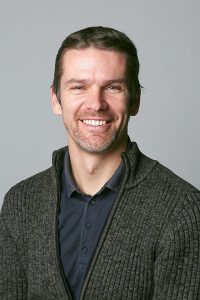
Until now all genome-wide sequencing technologies killed the cell to gain glimpses into its secrets. This technical limitation eliminated the possibility of follow-up analyses on a cell’s biological characteristics or molecular signatures once the cell was sequenced.
A team led by Bart Deplancke, PhD, at EPFL, and Julia Vorholt, PhD, at ETH Zurich, has enhanced single-cell RNA sequencing technology such that the method can now obtain the sequences of thousands of transcripts from a single cell and thereby infer genetic activity without breaking the cell open.
Details of the development of the new technology called Live-Seq were published in an article in the journal Nature (“Live-seq enables temporal transcriptomic recording of single cells”). This innovation enables the collection and profiling of RNA from live cells under minimally invasive conditions.
“It [Live-seq] is the combination of an optimized fluid force microscopy approach—essentially an atomic force microscope with a hollow cantilever, which allows us to extract cytoplasm (and thus also mRNA) from a cell without lysing it, and a highly sensitive single-cell transcriptomic approach developed in-house that allows us to derive genome-wide gene expression profiles from the minute amounts of mRNA that are present in the cytoplasmic extract,” said Deplancke.
Fluidic force microscopy or FluidFM uses minuscule channels like syringes to move tiny volumes of fluid under a microscope. This enables researchers to inject and extract molecules such as RNA from live cells without destroying the cells. FluidFM, invented at ETH Zurich and reported in an earlier study, has emerged as a versatile tool in experiments on individual cells.

“FluidFM combines the high precision of an atomic force microscope with volume-controlled dispensing down to a trillionth of a liter (picoliter) and even below under optical control,” said Vorholt. “It can be used as a nanometer-sized syringe for a variety of applications as a minimally invasive tool, for example, to inject fluid or small objects into cells or to extract them from inside cells keeping them alive.”
In addition to FluidFM, the ability to preserve tiny cytoplasmic samples and sequence RNA from these samples led to the development of Live-seq. The technology facilitates temporal transcriptomic analyses where the genetic activity of thousands of genes can be monitored at discreet time points over an extended period of the cell’s lifespan, sparking scientific questions that were impossible to address earlier.
“With Live-seq, we can now uniquely address highly interesting and biomedically relevant questions, such as why certain cells differentiate or are resistant to a cancer drug, while their sister cells are not,” said Deplancke.
A key question in the applicability of Live-seq revolves around whether the technology can sequence the transcriptome without disrupting cellular biology. To address this concern, the investigators demonstrated that Live-seq could distinguish various cell types without significantly altering the cell’s functional responses or growth. They showed Live-seq can directly map a cell’s temporal trajectory by sequentially profiling macrophage transcriptomes before and after exposure to infection, as well as profiling adipose stem cells before and after they specialized into fat cells.
“Both transcriptomically and phenotypically sampled cells appear difficult to distinguish from cells that were not probed. This was a surprising result to us, as it indicates that the impact of cytoplasmic sampling is minor at best,” said Deplancke.
Live-seq can help solve mysteries in biology that could not be experimentally addressed earlier due to the lack of instrumentations for temporal studies.
“We don’t kill the cell. This allows us to monitor what will happen to that cell down the line, such as whether it will differentiate into a specific cell type, whether it will react to a specific immunological stimulus or whether it will become resistant or susceptible to an anti-tumor drug,” said Deplancke. “We can sample cells multiple times along these trajectories without majorly impacting or killing the cell. At each time point, we can identify genes that correlate with the changes in cell phenotype, allowing us to find molecular determinants of a cell’s behavior, a great outstanding question in biology.”
Deplancke and his team intend to apply Live-seq to record the molecular changes in individual cells over key biological processes, much like individual images can be strung into a film that tells a story.



